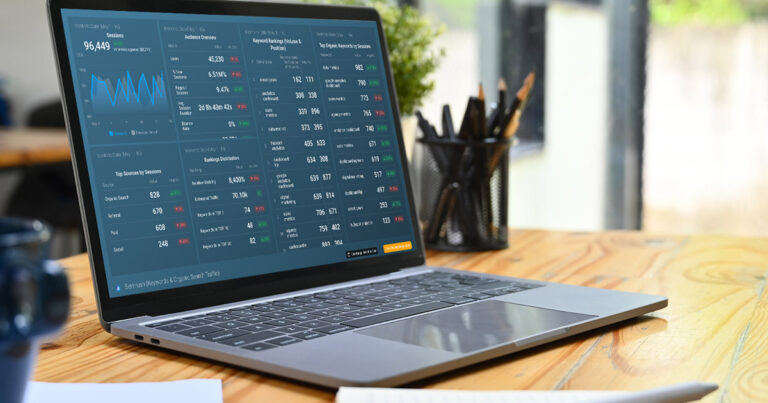How Are Your Customers Really Making Buying Decisions?
One of the biggest mistakes marketers make when mapping content to the buyer journey is thinking that their customers approach their buying decisions as a linear series of actions.
It’s no small wonder why we would think like that. Until relatively recently, the traditional buyer journey looked like this:

Truthfully, if you’re a serious marketer and you have any interest in lead generation and conversion, you’ll forget about this diagram right now. Because what it does is lull us into a false sense of security that we not only understand exactly how our customers are thinking but that everything they do online is guiding them in only one direction.
And that couldn’t be farther from the truth.
Your customers come into contact with a multitude of digital touchpoints, many of which aren’t controlled by your brand at all. They find information through Google search, digital ads, social media, product reviews, blogs, industry publications, podcasts, radio or tv ads, word of mouth, and product or company websites.
So, today’s digital buyer journey actually ends up looking a lot more like this:

This graph does a great job of illustrating how complex (and anything but linear) the digital buyer journey is. It also does a great job of illustrating how certain digital touchpoints can lead someone backward rather than forward. For example, “overwhelming information about the problem” as a result of independent online research points to how difficult it can be to find what you’re looking for, and how critical is it for brands to be thought leaders.
The big takeaway is that if brands want to reach their customers, drive them in a forward-moving buying journey, and track their behavior effectively, several actions are necessary:
- Brands need to produce several pieces of content for each stage of the buyer journey to ensure customers have multiple ways to get information – both to enable broader research and because not everyone wants to read a whitepaper.
- Brands need to key into the differences between digital devices used in the customer journey and how these variations can impact buying decisions; i.e., mobile vs. desktop vs. tablet.
- Brands need to insert themselves into the customer journey in more ways than just producing a multitude of content – the digital customer journey includes many phases within “awareness”, “consideration”, and “decision”, and each can last several months and, as we see, take the customer backward as well as forward.
Tracking Content Consumption Through the Digital Customer Journey
Content, broadly, is an integral component of any digital customer journey and applies to any touchpoint. An ad, for example, is content, just as an eBook is content.
Because there are many ways to access content during the digital customer journey, it’s important to have several pieces available across multiple touchpoints. We recommend taking stock of the content you already have to help you identify the content that you need. To do this efficiently, a content map is extremely helpful.
Here is a sample content map for an IT security company:

You can see how the content map clearly identifies existing content, who it’s for, and what buyer journey stage it satisfies. You can also see how this map identifies the areas where there is no content for the buyer journey.
Using this content map strategy, you can set off with a clear directive for what type of content you should be creating, right? Well, remember how complicated the buyer journey really is? Before you start churning out content to fill these very well-identified gaps, you need to first figure out what type of content it should be.
Here are a few key questions to help guide you and your team in determining the most advantageous content for the buyer journey based on your customers’ behavior:
- Do customers primarily use a mobile phone or desktop computer to make their purchases?
This isn’t a question about responsiveness. Your site should always be responsive to satisfy today’s user experience. However, if your consumers are primarily using mobile to digest your content, they will appreciate short, quick, informative pieces that don’t require a lot of time or attention; i.e., product reviews, videos, product comparisons, or interactive solutions like calculators. Chances are, your audience is using a mix of desktop and mobile, so you should look to provide multiple types of content that appeal to both.
- Where do the bulk of purchases occur? I.e. on the website, through social media, in a store, over the phone, etc.
Knowing where your customers are making buying decisions is valuable information you can use to justify where you choose to put content and how you reach out to customers. For example, if you determine many purchases are occurring through your website, you can begin placing content at other touchpoints that drive to the website, and you can reevaluate your eCommerce experience to ensure it’s doing the best it can for the customer and for your business.
- Where do customers come from before making a purchase; i.e., a competitor’s website, your blog, or a link in an email?
Wherever customers are coming from, if you know their path, you can place content strategically to influence buying decisions or get them to take the next step. Think ads on similar websites, calls-to-action on your blog or web pages – the more you know about your audience, the easier it is to guide their journey with purposeful content.
Different Devices for Different Behaviors
Because consumers are using multiple devices as they proceed along the buyer journey, it’s important for brands to track and respond to these activities. Marketing and retargeting tactics may work to an extent, but there are other considerations that will only boost your brand’s ability to convert.
- Ensure cross-device consistency. Where the customer experience is concerned, nothing is worse than a desktop experience that isn’t replicated with your mobile one. Not only should your eCommerce work well on all devices, but the information, layout, and accessibility should too.
- Optimize, optimize, optimize. How many times have you found yourself standing in a store, trying to access the website on your phone to see more about a product, and it just. won’t. load. Don’t replicate that frustration for your potential customers! They may move on – and never come back.
- Play into your audience’s mood. According to research by Convince&Convert, consumers make more spontaneous purchases when using mobile. In addition, more consumers make online purchases at home. With targeted, customized, real-time marketing, you can influence those spontaneous purchases in your brand’s favor.
Be Tactical and Strategic with Content to Drive Audiences Through the Digital Customer Journey
We know content is important and thusly is assigned to the phases of the high-level customer journey that make the most sense for the customer. However, along the path from awareness, to consideration, to decision, your potential buyers are taking a lot of different steps involving many touchpoints. Brands should focus on the digital customer journey and also consider how offline activities can influence that journey as well. Print advertising, radio spots, mailers, leave-behinds, and other offline content can drive potential buyers to your website and can be just as effective and strategic as a series of digital content.
When it comes to the digital customer journey, there are a lot of considerations for brands in terms of how to reach their target audience and get them to take action. But the most important consideration is who your audience really is. Your customer journey strategy can be highly effective if you’re resonating with your target audience and showing them that your brand understands them and what they need.
Without knowledge of who your audience is, your efforts to drive the digital customer journey may not be as effective.
Want to tap into your target audience and understand their digital customer journey so your brand can stand out and win customers? Of course you do! Fishnet can help – contact us today!


